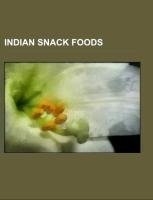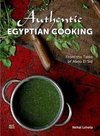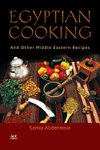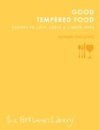
-
 Anglický jazyk
Anglický jazyk
Indian snack foods
Autor: Source: Wikipedia
Source: Wikipedia. Pages: 46. Chapters: Aam papad, Aloo Chaat, Aloo tikki, Bhajji, Bhelpuri, Bikaneri Bhujia, Bombay mix, Boondi, Chakodi, Chotpoti, Churmuri, Dabeli, Dahi puri, Dal biji, Dhokla, Farsan (food), Far far, Flattened rice, Ghugni, Kachori, Kadboli,... Viac o knihe
Na objednávku, dodanie 2-4 týždne
16.81 €
bežná cena: 19.10 €
O knihe
Source: Wikipedia. Pages: 46. Chapters: Aam papad, Aloo Chaat, Aloo tikki, Bhajji, Bhelpuri, Bikaneri Bhujia, Bombay mix, Boondi, Chakodi, Chotpoti, Churmuri, Dabeli, Dahi puri, Dal biji, Dhokla, Farsan (food), Far far, Flattened rice, Ghugni, Kachori, Kadboli, Khaman, Khandvi (food), List of Indian snacks, Lukhmi, Makka Poha, Mangalore bajji, Mathri, Mirchi Bada, Mukhwas, Murukku, Muthia, Namak para, Namak pare, Pakora, Papadum, Papri chaat, Patra (dish), Ponganalu, Pudachi Vadi, Puliyogare, Puri bhaji, Pyaaj Kachori, Ragda pattice, Rose Cookies, Sabudana Khichadi, Sabudana vada, Sakinalu, Samosa, Sevpuri, Sev (food), Sev mamra, South Indian Snacks, Vada (food), Vada pav. Excerpt: For the Nicaraguan dictator(s), see: Somoza A samosa is a fried or baked pastry with a savory filling, such as spiced potatoes, onions, peas, lentils, ground lamb, ground beef or ground chicken. The size, shape and consistency may vary, but typically, they are distinctly triangular. Samosas are often accompanied by chutney. They are a popular appetizer or snack in South Asia, Southeast Asia, Central Asia and Southwest Asia, the Arabian Peninsula, the Mediterranean, the Horn of Africa, North Africa, and South Africa. Samosa (; Hindi: , Urdu: ¿) is generally used in the South Asian and South-east Asian countries. Other names are used in other areas: (Arabic: ¿ sambusak), Bengali: , sing-ra in Assamese, Oriya: , Punjabi: , Hebrew: ¿ sambusak, Gujarati: , Kannada: , Malayalam: , Marathi: , Persian: ¿¿¿¿¿¿, Tamil: , Telugu: , Urdu: ¿, sambusak, samsa (pronounced ) or somsa in Turkic Central Asia (Kazakh: , , Kyrgyz: , ;, Uzbek: , , Uyghur: , ), as well as Turkey (Turkish: ), sambusa among Arabs, Eritreans, Ethiopians, Somalis (Somali: ) and Tajiks (Tajik: ), sanbusé among Iranians (Persian: ¿), samuza (Burmese: , IPA: ) among Burmese, sambosa among Malagasy or chamuça in the Lusophone world. The word "samosa" can be traced to the Persian sanbosag. The pastry name in other countries also derives from this root, such as the crescent-shaped sanbusak or sanbusaj in Arab countries, sambosa in Afghanistan, samosa in India, samboosa in Tajikistan, samsa by Turkic-speaking nations, sambusa in parts of Iran, and chamuça in Goa, Mozambique and Portugal. While they are currently referred to as sambusak in the Arabic-speaking world, Medieval Arabic recipe books sometimes spell it sambusaj. Preparation of wada for the Sultan Ghiyath al-Din, the Sultan of Mandu. Samosas being prepared. Small inscription 'sanbusa', samosa. Ghiyath Shahi seated on a stool in a garden is being offered a dish, possibly of samosas. A cook is frying them over a stove, while another is placing them on a roun
- Vydavateľstvo: Books LLC, Reference Series
- Rok vydania: 2014
- Formát: Paperback
- Rozmer: 246 x 189 mm
- Jazyk: Anglický jazyk
- ISBN: 9781157052401









 Nemecký jazyk
Nemecký jazyk 


